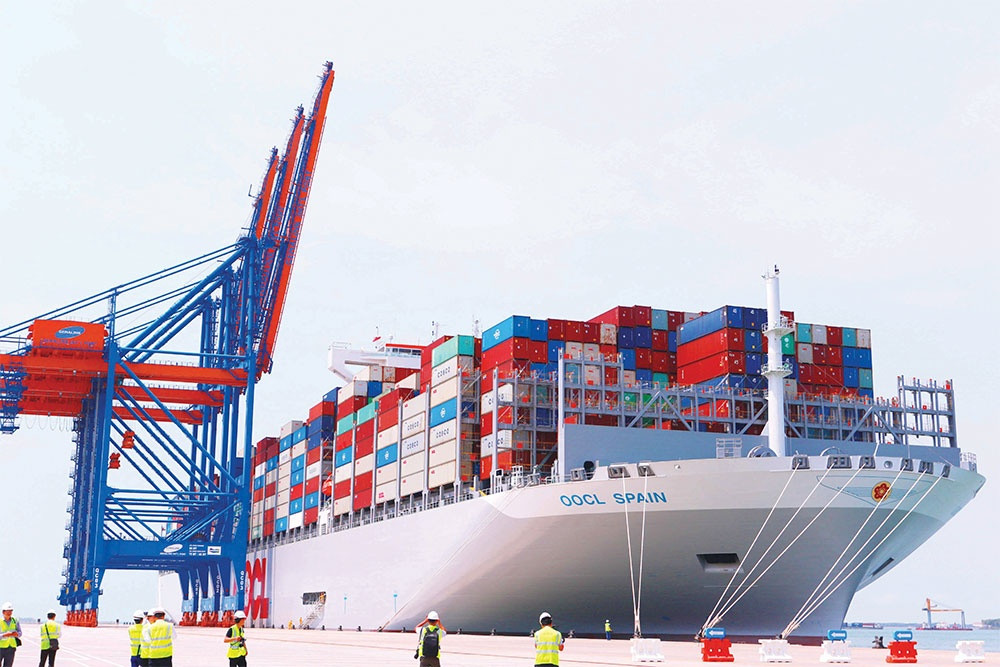 |
The National Assembly (NA) last week adopted a resolution on the country’s Plan on Socioeconomic Development for 2024 which had been under intensive discussions by lawmakers based on the existing situation and forecasts of internal and external developments, especially ongoing global geopolitical tensions that may dent the nation’s efforts to achieve its targets.
Under the resolution, GDP growth is cautiously set to be 6-6.5 per cent, higher than this year’s expectation of below 5 per cent. Per capita income will be $4,700-4,730, higher than $4,400 this year, and the ratio of manufacturing and processing in GDP will be 24.1-24.2 per cent, lower than 25.8 per cent of this year.
According to a government report submitted to the NA, the world situation in 2024 “is forecast to continue to be more complicated and unpredictable, with a continued slowdown in global economic growth, trade, and investment. Meanwhile, the economy will continue to suffer from “dual negative impacts” from unfavourable external factors and internal limitations and shortcomings.
“The good and the bad are intertwined, but in macroeconomic management, we must both control inflation and promote growth,” Prime Minister Pham Minh Chinh said.
Vu Hong Thanh, Chairman of the National Assembly Economic Committee, warned that 2024 will also be complicated due to geopolitical tensions and competition between major countries becoming more intense. Moreover, the Russia-Ukraine conflict and the Israel-Hamas conflict may become increasingly complicated, posing unpredictable risks. Global economic growth, trade, and investment will continue a downtrend, while traditional and non-traditional security factors, natural disasters, epidemics, climate change will pose many potential risks.
Besides opportunities, the economy and society will continue to face many great problems ahead. “Thus the growth rate of 6-6.5 per cent for 2024 is quite cautious, and even perhaps high,” said Thanh.
The government will assign ministries and localities to devise their own solutions to reach the national growth targets, before enacting Resolution No.01/NQ-CP in the early days of 2024 on key tasks and solutions to implement the socioeconomic development plan.
“The government should continue consolidating and promoting the main growth drivers, especially investment, consumption, and exports, closely following the orientation of innovating the growth model, restructuring the economy, improving labour productivity and competitiveness, and ameliorating the investment and business climate,” Thanh said.
“It is also proposed that the government focus on recovering and strongly developing industries, especially processing and manufacturing industries, to become a driving force for economic growth.”
According to the Ministry of Planning and Investment (MPI), Vietnam saw an estimated index for industrial production for October increase 5.5 per cent on-month and 4.1 per cent on-year. In the first 10 months of 2024, the index was estimated to climb only 0.5 per cent on-year – far lower than that in the same periods of 2022 (98.9 per cent), 2021 (3.8 per cent), and 2020 (2.6 per cent).
As compared to the corresponding period last year, the processing and manufacturing sector, which creates more than 80 per cent of industrial growth, ascended 4.9 per cent; while the mining sector dropped 5.7 per cent; the electricity production and distribution sector climbed 5.6 per cent; and the sector of water supply and wastewater and waste treatment expanded 5.2 per cent.
In the first 10 months, total export-import turnover hit an estimated sum of nearly 558 billion, down 9.6 per cent on-year. In which the export turnover touched $291.3 billion – down 7.1 per cent, and the import value sat at $266.7 billion – down 12.3 per cent.
“With the Vietnamese economy largely open to the global economy, its resilience remains limited. So all difficulties outside will undermine our economy, especially our trade,” said MPI Minister Nguyen Chi Dung.
The government told the NA that based on out-of-expectation economic growth rate in the first nine months of this year, the economy is set to grow by more than 5 per cent this year, with an average inflation rate of about 3.5-4 per cent.
“This growth rate, though it may fail to reach the desired target of 6-6.5 per cent, will be quite positive, especially given the 2023 growth rates in many surrounding nations are expected to be lower, including Thailand on 2.7 per cent, Malaysia on 4 per cent, and Indonesia on 5 per cent,” Minister Dung said.
Many international organisations have set a positive economic growth target for Vietnam, including the International Monetary Fund at 5.8 per cent, the World Bank at 5.5 per cent, the Asian Development Bank at 5.8 per cent, and Moody’s at 5.6 per cent.
According to the Ministry of Finance, in 2023, a package of $8.45 billion is earmarked for supporting businesses in the form of tax exemption and reduction. So far, over $5.48 billion has been realised, and going forward another $2.74 billion will be added to the package.
Source: VIR